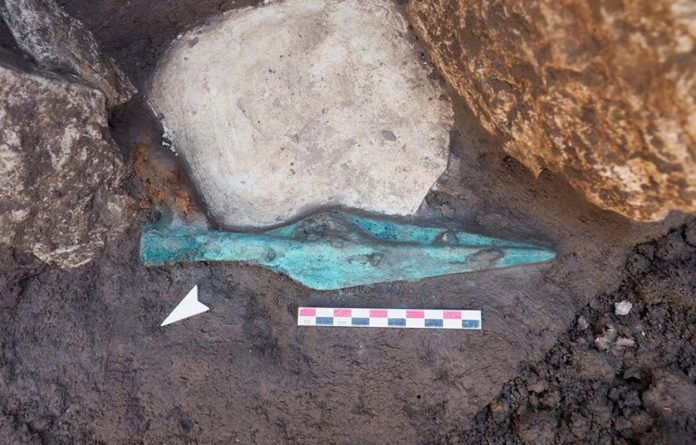Large Pre-Roman Necropolis Uncovered in Trento
Archaeologists in Trento, Italy, have discovered a monumental pre-Roman necropolis containing high-status tombs and associated burial artifacts.
The discovery was made during restoration work on a building in the Santa Croce district by researchers from the Archaeological Heritage Office of the Department of Cultural Heritage and Activities of the Autonomous Province of Trento.
According to a press release from the Provincial Council’s press office, more than 200 tombs were found beneath layers of Roman and medieval material at a depth of eight meters below the current street level.
Experts estimate that the necropolis dates back to the 9th–6th centuries BCE, corresponding to the Early Iron Age. At the time, the region was inhabited by a confederation of Alpine tribes known as the Raeti, whose language and culture were closely linked to the Etruscans.
“The Iron Age was a period of profound transformation from a historical and cultural perspective across the Mediterranean, the Alpine Arc, and beyond. The great civilizations of the Etruscans, Phoenicians, Greeks, and Celts flourished. It was also the era of the first Olympic Games, traditionally dated to 776 BCE, and the founding of Rome in 753 BCE,” said Superintendent Franco Marzatico.
A distinctive feature of the necropolis is its layout, forming a monumental palimpsest with vertically positioned burial steles marking the western edge of a stone chamber covered by a burial mound, where a dense concentration of associated tombs accumulated over time.
The presence of high-status burial goods in the tombs provides critical insights into social identity, roles, and status. Notably, metal artifacts, including weapons and finely crafted jewelry inlaid with amber and glass paste, indicate extensive cultural influences and connections with Italic regions.

